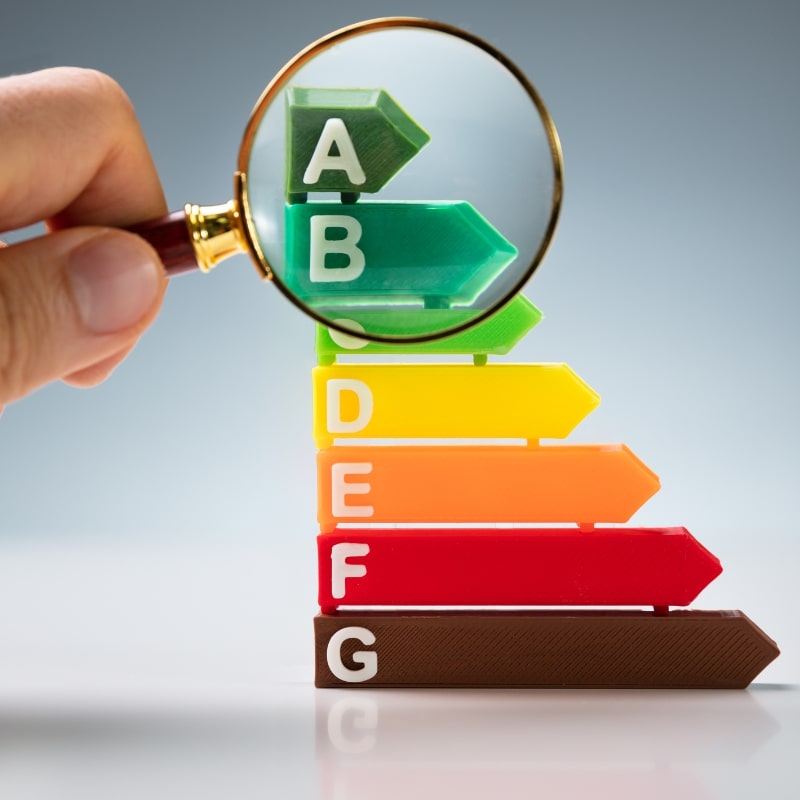Energy efficiency
Nowadays it is increasingly important to think about energy and sustainable aspects.
In particular, the energy design of a building aims to improve the comfort conditions in one’s home, making systems more efficient and thus reducing energy consumption.

Energy analysis and certification
To analyse a property energetically means to define the materials of which it is made and the characteristics of the systems present in the status quo. Special software allows us to establish the building’s energy class, through the so-called APE (Attestato di prestazione energetica).
This document, which is required for several reasons in a design process, turns out to be a valid beginning for an assessment of the building’s efficiency.
Thermography
The infrared thermal camera is an instrument that is capable of instantly locating the following characteristics of a building without masonry work: thermal bridges, water infiltrations, mould, and defects in water pipes and power lines.
Having a consultation with the use of this tool therefore serves to identify these problems without first having to carry out tests or traces, and allowing you to find the best and most effective ways to solve them.


Elimination of moisture and thermal bridges
Moisture can be caused by several factors that sometimes overlap and each of these causes can be eliminated or attenuated.
The important thing is to analyse the drivers well. Often the cause is thermal bridges, which occur where there is a large difference in temperature between one point and another of the same wall.
We ensure, through thermography, stratigraphy analysis and non-destructive surveys, to find these causes and propose possible solutions.
Envelope insulation
Every building that needs cooling or heating has some heat dispersion. We take care of designing a correct insulation of the envelope through design details that help the workers to correctly implement the installation of all insulation.
Ventilated and non-ventilated roofs, external and internal coats, installation of fixtures, insulation of the floors towards “cold” rooms, are just some of the interventions that will be analysed to propose the best solution to limit heat dispersion.
